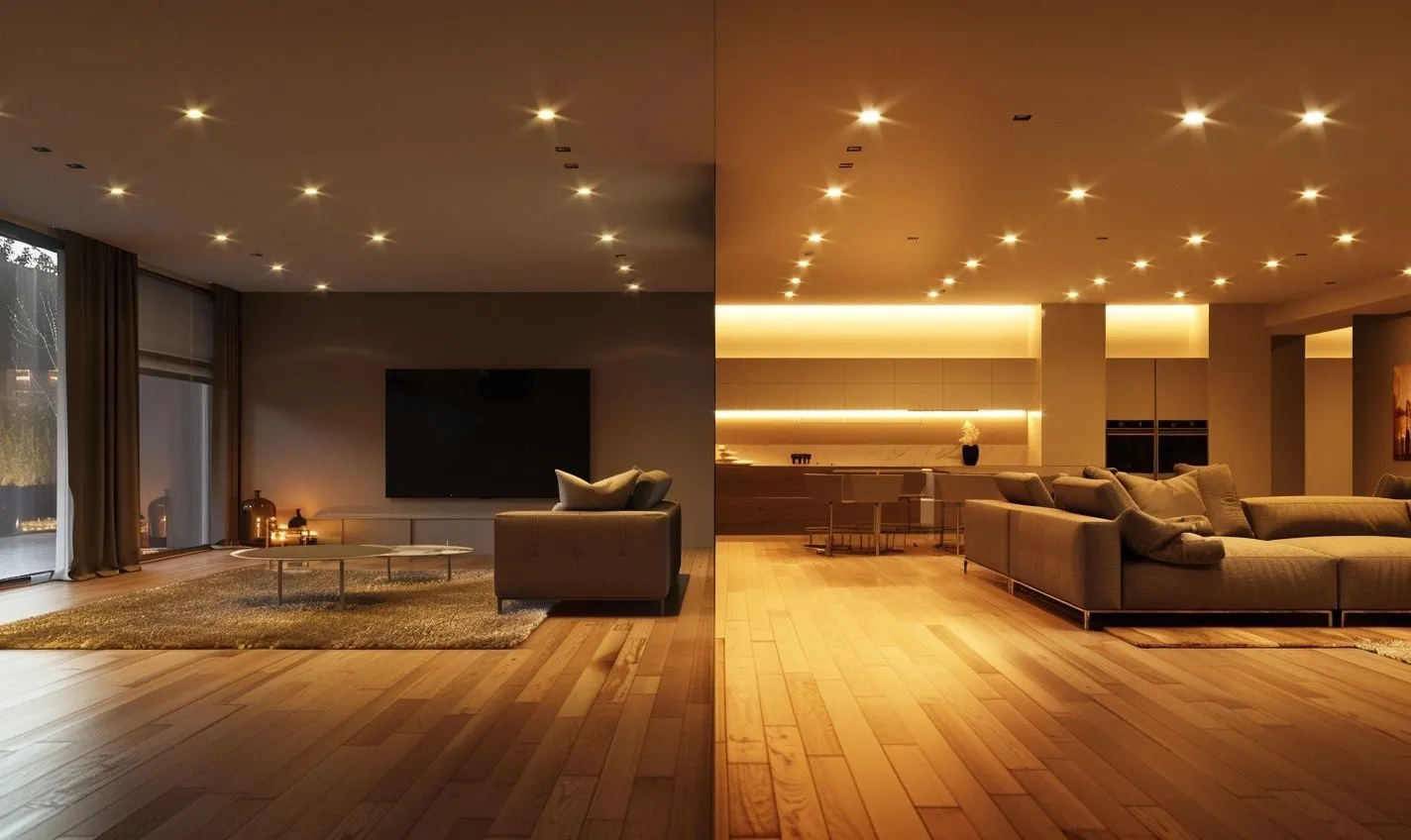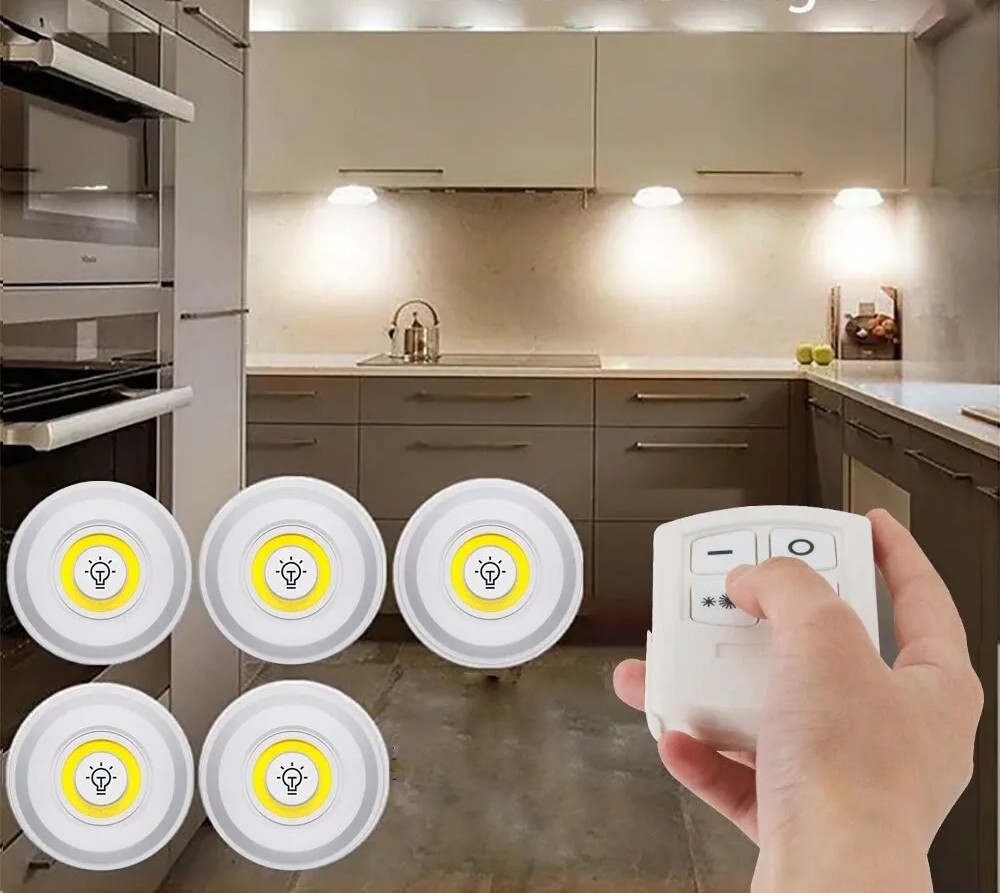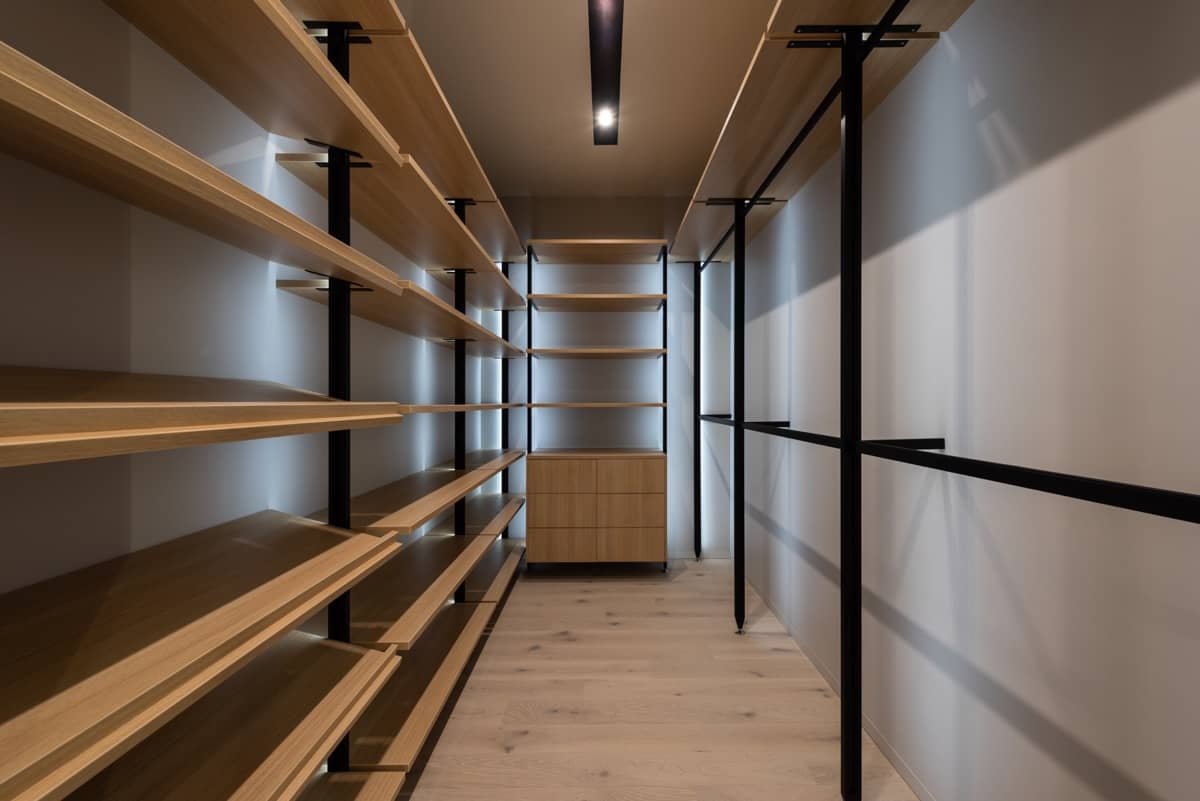
Welcome to the fascinating world of LED lighting, where colors and temperatures are crucial in creating the perfect ambiance for any space. As an expert in the field, I am thrilled to guide you through the intricate nuances of LED colors and temperatures, helping you make informed decisions to enhance your lighting experience.
Understanding LED colors is essential as it influences the mood and productivity of the environment. Each color uniquely illuminates your surroundings, from the warm and inviting hues of soft white LEDs to the bright and energizing cool white LEDs.
Furthermore, LED color temperatures play a significant role in setting a room’s tone. Selecting the right temperature, from warm (soft white) to cool (daylight), can transform a space from cozy and intimate to fresh and vibrant.
Join me on this enlightening journey as we delve deep into the world of LED lighting colors and temperatures. By the end of this comprehensive guide, you will be equipped with the knowledge and expertise to curate the perfect lighting scheme for any setting.

Understanding LED Colors
Welcome to the colorful world of LED lighting! LEDs come in various hues, each offering a unique atmosphere and ambiance. Let’s dive into the realm of LED colors and discover the magic they bring to our spaces.
Dive into the Rainbow of Possibilities
LEDs are not just about bright lights but about creating an experience. From warm, cozy tones to cool, crisp shades, LED color temperatures go beyond illumination—they set the mood.
Blueprint of Emotions
Have you ever felt invigorated by a vibrant blue light or soothed by a soft, golden glow? Colors can evoke emotions, and LEDs harness this emotional connection to enhance our environments.
Shades of Brilliance
Imagine a palette of hues at your fingertips, ready to paint your world in any shade you desire. You can transform any space into your chosen realm with LED lighting colors.
And just like an artist selects the perfect color for their masterpiece, choosing the right LED color temperature can make all the difference in how a room feels and functions.
Temperature Tales
Think of LED color temperatures as the temperature of the soul of a room. A warm white LED exudes a cozy embrace, while a cool white LED offers a refreshing breeze. Which temperature best tells your space’s story?
- Warm white LEDs (2700-3000K) create a cozy and intimate atmosphere, perfect for bedrooms and living rooms.
- Cool white LEDs (4000-5000K) provide a bright, energetic ambiance ideal for kitchens and workspaces.
- White LEDs (5000-6500K) mimic natural daylight, enhancing concentration and productivity in offices and studios.
Whether aiming for a soothing sanctuary or a vibrant workspace, understanding the nuances of LED colors and temperatures allows you to curate the perfect setting for every moment.

Different LED Color Temperatures
When it comes to LED lighting, understanding the different color temperatures is essential to create the perfect ambiance in any space. Each color temperature evokes a unique feeling and serves a specific purpose.
Warm White (2000K-3500K)
Imagine the cozy glow of a candlelight dinner. That’s the warmth that a warm white LED light can bring to your living room or bedroom. It creates a welcoming and intimate atmosphere, perfect for relaxation and unwinding after a long day.
Daylight White (4000K-5000K)
Step into a bright, sunlit room where productivity flows effortlessly. The daylight white LED mimics natural daylight, making it ideal for task-oriented spaces like offices, kitchens, and work areas. It boosts focus and energy, keeping you alert and active.
Cool White (5500K-6500K)
Think of a crisp winter morning with bright, refreshing light. The cool white LED radiates a refreshing aura, perfect for spaces that require clarity and precision, such as studios, hospitals, and retail stores. It enhances visibility and keeps you sharp.
Understanding the impact of LED lighting colors can transform your environment and influence your mood and productivity levels. You can create the desired ambiance for any setting by choosing the right LED color temperature.
Consider the following factors when selecting LED color temperatures:
- Functionality of the space
- The mood and ambiance you want to create
- Natural light availability
Are you drawn to a cozy fire’s warmth or a snowy day’s crisp brightness? Your personal preferences and the intended use of the space should guide your choice of LED color temperature.
Just as colors evoke emotions in art, LED colors can set the tone in your environment. The effects of LED color temperatures on mood are profound, impacting how you feel and behave in a particular space.

Impact of LED Lighting Colors
Have you ever considered how the color of light can affect your mood and productivity? The colors of LED lighting play a significant role in creating the ambiance and atmosphere of a space. Let’s dive deeper into the impact of LED lighting colors on our daily lives.
Setting the Right Tone:
Think about the warm, cozy feeling of a room bathed in soft, warm white LED light versus the crisp, refreshing brightness of cool white LED light. The LED color temperatures you choose can set the tone for any environment.
Enhancing Productivity:
Did you know that cool white LED light increases focus and alertness, making it ideal for workspaces? On the other hand, warm white LED light can bring a sense of relaxation and comfort, perfect for winding down after a long day.
- Cool white LED: Boosts concentration and productivity
- Warm white LED: Promotes relaxation and tranquility
Creating the Right Ambiance:
Whether you’re looking to create a vibrant, energetic atmosphere or a soothing, intimate setting, LED lighting’s colors can help you effortlessly achieve your desired ambiance.
Consider the following when choosing LED lighting colors for different spaces:
- Living Room: Opt for warm white LED for a cozy feel
- Office: Choose a cool white LED to boost productivity
- Bedroom: Create a relaxing atmosphere with soft, warm white LED
Expressing Your Personality:
Your choice of LED colors reflects your personality and style. Whether you prefer bold and vibrant hues or subtle and calming tones, there is an LED color temperature to suit every individual.
So, next time you select LED lighting colors for your space, consider their impact on your mood, productivity, and overall well-being. The right LED temperature guide can transform any room into a personalized haven tailored to your preferences.

Choosing the Right LED Color Temperature
One critical factor to consider is the LED color temperature when it comes to LED lighting colors. Understanding the different color temperatures of LED lighting can significantly impact a space’s mood, ambiance, and functionality. Let’s explore how to choose the right LED color temperature for your needs.
Understanding LED Colors
LEDs come in various colors, ranging from warm to cool tones. Each color temperature serves a distinct purpose: creating a cozy atmosphere or promoting focus and productivity.
Impact of LED Lighting Colors
The color temperature of LED lighting can impact various aspects:
- Mood: Warm tones create a relaxing ambiance, while cool tones evoke energy and focus.
- Health: Proper color temperature can regulate circadian rhythms and improve overall well-being.
- Productivity: Cool white light is ideal for tasks requiring concentration, while warm light enhances comfort.
RGB vs. Monochromatic LED Colors
RGB LEDs offer a wide range of customizable colors, making them perfect for creative lighting applications, while monochromatic LEDs provide consistent and uniform lighting in specific color temperatures.
Effects of LED Color Temperatures on Mood
Imagine a warm white LED casting a soft glow in a cozy living room, creating a welcoming and intimate atmosphere. In contrast, a cool white LED illuminating a workspace enhances alertness and productivity, similar to natural daylight.
By understanding the nuances of LED colors and color temperatures, you can tailor the lighting in your space to suit your preferences and needs perfectly.

RGB vs. Monochromatic LED Colors
LED lighting comes in various colors, each serving a different purpose and creating a unique atmosphere. One key distinction in LED colors is between RGB and monochromatic options.
Understanding RGB LED Colors
RGB LED colors are created using red, green, and blue light combinations. When these three colors are mixed in different intensities, they can produce a wide range of vibrant hues. It’s like an artist’s palette, where you can mix primary colors to create a spectrum of shades.
Exploring Monochromatic LED Colors
On the other hand, monochromatic LED colors consist of a single shade, such as warm white, cool white, or yellow. These colors are often preferred for simplicity and elegance, making them suitable for various settings.
- RGB LED colors offer versatility and creativity.
- Monochromatic LED colors provide a classic and clean look.
Choosing the Right LED Option for You
When deciding between RGB and monochromatic LED colors, consider the mood and ambiance you want to create in your space. Are you looking for dynamic, colorful lighting or a more subdued, uniform glow?
- RGB colors are ideal for entertainment areas or spaces where you frequently want to change the ambiance.
- Monochromatic colors work well in areas where a consistent and calming light is preferred, such as bedrooms or offices.
Remember that RGB and monochromatic LED colors have unique benefits, so choosing based on your specific lighting needs and preferences is essential.

Effects of LED Color Temperatures on Mood
Have you ever noticed how the lighting in a room can instantly change how you feel? LED colors play a significant role in setting the mood and ambiance of a space. Let’s dive into the fascinating world of LED color temperatures and how they can impact your emotions.
The Warm Embrace of Soft White LEDs
Imagine walking into a room bathed in a soft, warm glow. The gentle hues of soft white LED lighting mimic the cozy embrace of a crackling fireplace on a winter evening. These LED color temperatures create a welcoming and soothing atmosphere, perfect for unwinding after a long day.
The Energizing Power of Daylight LEDs
On the other end of the spectrum are daylight LED colors, reminiscent of a bright and sunny day. These LED color temperatures mimic natural sunlight, boosting energy levels and enhancing focus. Picture yourself in a well-lit office space, feeling alert and motivated to tackle tasks with renewed vigor.
Finding the Right Balance
Just as a painter carefully selects the perfect shades for a masterpiece, choosing the right LED color temperatures is crucial in creating the desired ambiance. Here are some considerations to keep in mind:
- Soft White LEDs: Ideal for bedrooms, living rooms, and cozy reading nooks.
- Daylight LEDs: Perfect for kitchens, offices, and areas where brightness is key.
Enhancing Your Space with LED Colors
By understanding the impact of LED lighting colors on your mood, you can transform any space into a sanctuary of comfort or a hub of productivity. Experiment with LED color temperatures to find the perfect balance that resonates with your emotions and lifestyle.
Conclusion
In conclusion, understanding LED colors and temperatures is essential for creating the perfect ambiance in any space. Whether you want to set a relaxing tone with warm white lighting or need bright, cool white lighting for tasks, knowing the differences in LED colors and temperatures can help you achieve your desired outcome.
By learning how colors and temperatures impact a room’s mood and functionality, you can make informed decisions when selecting LED lighting for your home or business. From enhancing productivity in work environments to creating a cozy atmosphere in living spaces, the right LED color temperature can make a significant difference.
Remember, warmer color temperatures ranging from 2700K to 3500K are ideal for areas where you want to promote relaxation and comfort, while cooler temperatures between 4000K and 6500K are perfect for spaces requiring task lighting and increased focus.
Ultimately, the key to harnessing the full benefits of LED lighting lies in grasping the nuances of colors and temperatures. So, next time you shop for LED bulbs or fixtures, remember the significance of LED colors and temperatures to illuminate your surroundings just as you envision.

Frequently Asked Questions (FAQs)
What are LED colors, and why are they important?
LED colors refer to the different hues produced by Light-Emitting Diodes. Understanding LED colors is crucial as they can greatly impact a space’s ambiance, functionality, and aesthetics.
What are the different LED color temperatures available?
LED color temperatures are usually categorized into warm white (soft white), cool white, and daylight. Warm white gives off a cozy ambiance, cool white is more neutral, and daylight mimics natural sunlight.
How do LED lighting colors affect mood and productivity?
Warm tones like yellows and oranges are often associated with relaxation, while more fabulous shades like blues and whites can boost alertness and productivity.
What color temperature is best suited for different spaces?
Warm white LEDs are ideal for living rooms and bedrooms, while cool white or daylight LEDs work well in kitchens, offices, and bathrooms where task lighting is needed.
Do LED colors affect energy consumption?
Yes, the color temperature of LED lighting can impact energy usage. Cooler white LEDs tend to be slightly more energy-efficient than warm white LEDs.
How do I choose the right LED color temperature for my home?
Consider each room’s function. Opt for warm white in areas where relaxation is key and cooler temperatures in spaces that require focus or concentration.






